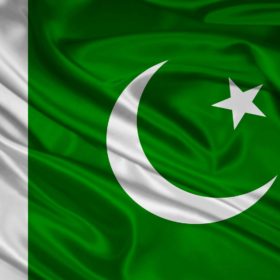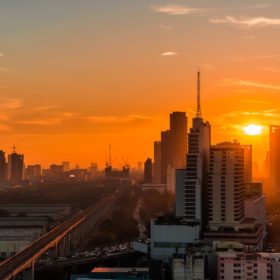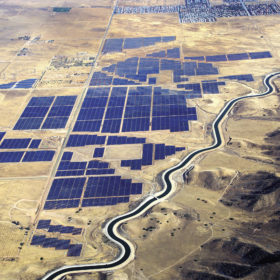Solar-plus-storage vs. grid enhancement, part III
A new IRENA report highlights how large-scale storage systems can be thought of as “virtual power lines” that enhance the performance and reliability of power networks when congestion occurs. It expects global storage capacity from large-scale batteries to grow from about 11 GWh at present to between 100 GWh and 167 GWh by 2030.
IRENA and the UN ink agreement to combat desertification with renewables
A memorandum of understanding signed by the institutions was not solar specific but the use of PV modules for shading, especially in agriculture, can reduce water consumption and help halt the expansion of deserts.
Pakistan’s Nepra mulls another 50 MW of solar
The country is steadily expanding solar generation capacity as it aims for 5 GW by 2022, helped by an influx of foreign investment from China’s Belt & Road infrastructure program and World Bank capital.
The tide is changing for ground-mounted PV in Ireland
Ireland appears ready to embrace PV after years of failed announcements. Globaldata predicts the EU member state will deploy around 1.3 GW of solar by 2030, with renewables potentially meeting 65% of electricity demand. Furthermore, Irish Water has announced it wants to deploy solar at its water treatment plants.
Cameroon to improve power supply with 25 MW solar projects
Energy of Cameroon wants to build two solar parks to improve power supply in the country’s northern regions. The projects will be developed by a consortium led by Norwegian solar company Scatec.
CBEA lets loose first $5.5 million for 60 minigrids in Tanzania
Crossboundary Energy Access (CBEA) was established in January with large investment contributions from Rockefeller and Shell Foundations. The funding facility, which said it would work to unlock $11 billion in funding for the electrification of 100 million people in Africa, has penciled its first transaction with PowerGen Renewable Energy.
Osaka Gas opens up corporate PPA shop in Thailand
Thailand’s solar market had ground to a bit of a halt after FITs were cut. Osaka Gas has launched a joint venture with Energy Pro Corporation to market commercial and industrial PV arrays under corporate power purchase agreements.
Cuba inaugurates 10 MW of solar capacity with help of Abu Dhabi loans
The projects were developed under the auspices of an arrangement between the Abu Dhabi Fund for Development and IRENA which supplies concessional loan financing for renewables facilities.
China’s grid planners could learn from European experience
The world’s biggest solar market is on track for an unsubsidized future but policymakers continue to grapple with grid planning. A report by the German Energy Agency has offered suggestions on how China’s approach to grid design could be tweaked to ensure priority dispatch for PV while slashing administrative costs and reining in renewable energy losses.
JinkoSolar delivers 258 MW for PV-wind project in Vietnam
The Chinese manufacturer has supplied 258 MW of monocrystalline PERC double glass modules to Trung Nam Group. It claims the project is one of the biggest solar-wind installations in the Southeast Asian country.










